What Is An Experience?
iAdvize

Since you're here, visiting this post right now, you've probably thought about customer experience (CX). You may be engaged with or curious about how CX programs function in today's retail businesses. And you may have expertise in CX technologies, practices, and metrics. But have you ever paused to think: What Is An Experience?
Why does this question matter? And why should you think about it now?
You know the answer intrinsically, even if you can't quite put your finger on it. You can feel an undercurrent of change sweeping through retail. If you work in the retail industry, you can feel it in your company--but you feel it from the outside, as a customer too.
We're in the middle of an economic revolution. Gone are the days when brands could take customer loyalty for granted or coast along with old business models that depersonalized customers. Today's environment is all about experiences, personal connections, and humanity.
We've been talking about the experience economy for decades now. And customers are starting to lose patience with brands that don't seem to care about them. They know they can take their business elsewhere if they don't feel valued.
Consider this fact: Eighty-four percent (84%) of customers want you to treat them like a person, not a number, according to research.
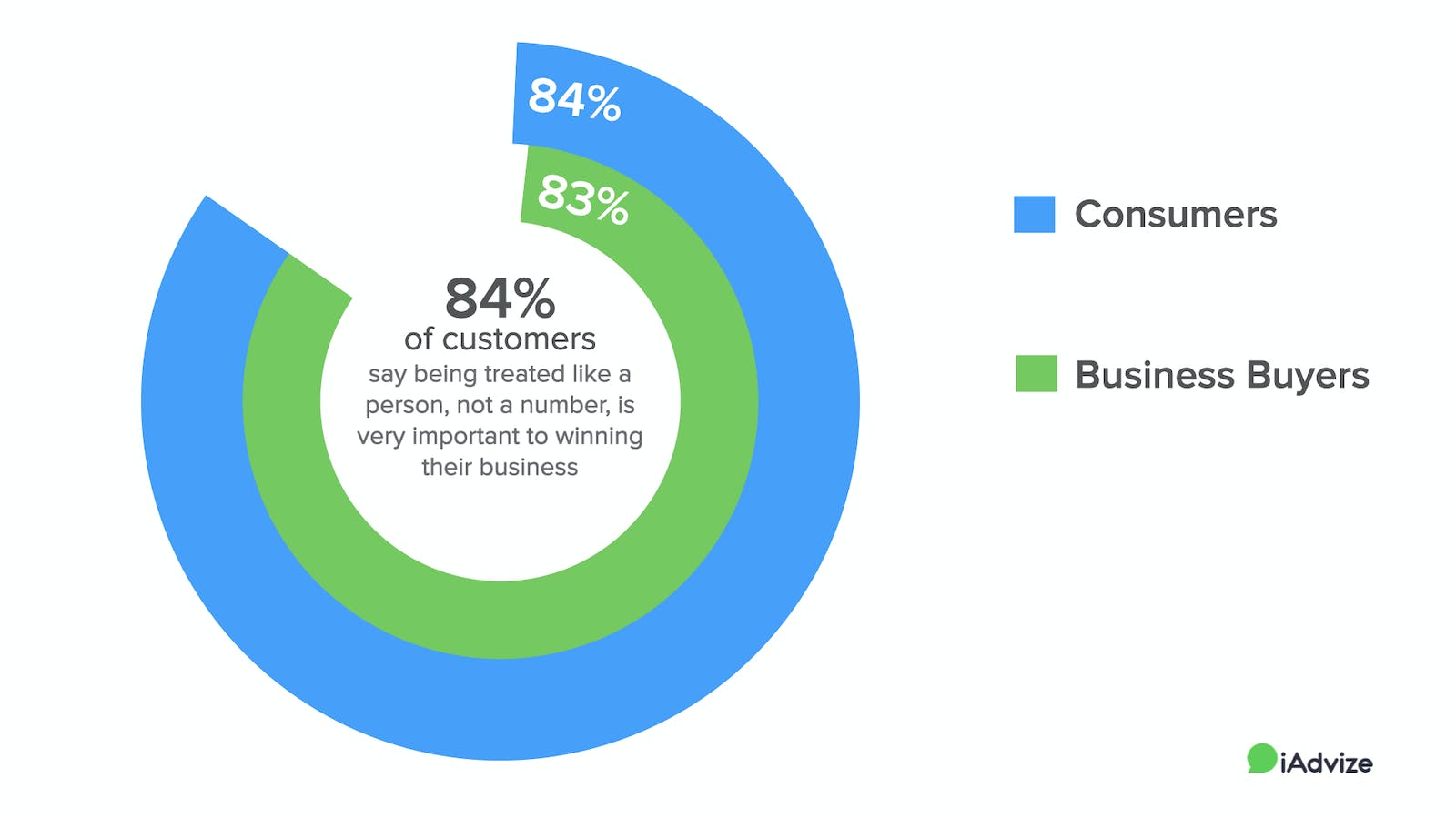
It's time to take a deep dive into the idea of experience. What does it mean from a philosophical perspective? And what does it mean on a more tangible level--to your own customers?
And you need to ask yourself if you're truly ready for the experience revolution. It's the undeniable force that is going to shape the coming years in retail.
Experiencing vs. Having an Experience. Yes, There Is a Difference
To answer the question "what is an experience?" you can first think about what it means to experience something.
Take the experience you're having right now. You're reading this blog post. Or are you?
Maybe you're sitting in a cafe with headphones on. And you're listening to your favorite playlist and smelling the aroma of coffee. You keep glancing up to see if someone you are meeting has arrived yet.
In other words, you're distracted. If your friend arrives before you finish this post, you may quit reading it and never return. You may also feel tired or emotionally drained and not give your full attention to this content.
And if those things happen, have you truly experienced this blog post? No, you haven't.
Yes, we're treading away from CX here and into the realms of philosophy. But stick with us.
20th-century American philosopher, John Dewey, explored these ideas in his 1934 essay Having an Experience. According to Dewey, "Experience occurs continuously, because the interaction of live creature and the environing conditions is involved in the very process of living."
To put it more simply: By being alive, you're experiencing, according to Dewey.
But he also says many experiences are "inchoate"--or rudimentary and incomplete--due to "distraction and dispersion."
So you click on this blog post to read it. But distractions in your environment or your own inner thoughts cause you not to engage with it fully. You're experiencing, but you're not having an experience.
And if you ARE following along and having an experience of this content, we're glad to have you with us.
Dewey contrasts this usual type of fragmented experiencing with having a true experience. When we have an experience it is "demarcated in the general stream of experience from other experiences." He cites these examples:
A piece of work is finished in a way that is satisfactory; a problem receives its solution; a game is played through; a situation, whether that of eating a meal, playing a game of chess, carrying on a conversation, writing a book, or taking part in a political campaign, is so rounded out that its close is a consummation and not a cessation. Such an experience is a whole and carries with it its own individualizing quality and self-sufficiency. It is an experience.John Dewey
So following Dewey's premise, an experience has a sense of unity and completion. When you have an experience, you've fulfilled the purpose for which you initiated the experience.
Let's bring this idea back to retail and customer experience.
Why do you engage with a retailer at all? To buy something or to explore the idea of buying something.
You can rush into a retail megastore to buy cat litter and something for dinner. Maybe you grab a few impulse items near the checkout. The visit is quick, anonymous, and uneventful.
It's like dozens of visits you've made to that store, and dozens more you'll make in the future. You achieved what you set out to do. But there's a quality of routine sameness about the visit to the megastore. In Dewey's words, it's not "demarcated" from the "general stream" of other like experiences you've had with that retailer or similar ones.
Now imagine you're shopping for a sleeping bag for an upcoming winter backcountry excursion. You visit an outdoor specialty retailer and receive a warm greeting when you enter the door. After browsing a bit, you head to the tent section. There, you engage with a product expert who knows all the nuances of the tent models you're considering. That expert listens actively, helps you test models, and makes calls to other stores to check on stock.
You may walk away buying a tent that day. Or you may not. Either way, you've had an experience. Chances are, you'll remember the personalized attention of the product expert and the time you've spent testing out different tents. Your experience is distinct, memorable, and achieved a purpose.
It's those types of authentic experiences that are mattering more and more to shoppers. And that authenticity is what retailers must strive to provide in the emerging experience economy.
What Are the Qualities of a Standout Experience?
As our tent shopping example shows, an authentic experience is likely to stand out in a shopper's mind. It's not a generic, everyday experience--but something more distinct and memorable.
So how can you create those types of experiences for customers? You need to shift your mindset. Instead of viewing customers as an anonymous mass, you need to realize that there are people behind every web visit and every transaction.
And you need to know that a recent study found 77% of consumers say they've maintained relationships with specific brands for over a decade. Plus, over 60% say they'll go out of their way to buy from a favorite brand--and they'll buy more often too.
Experiences that drive loyalty have certain qualities in common. Those experiences are substantive, emotional, human, and informative.
Substantive
More people have adopted an "experiences over things" perspective in recent years. In fact, research has found that 74% of Americans prefer experiences to things. That's true across all generational groups.
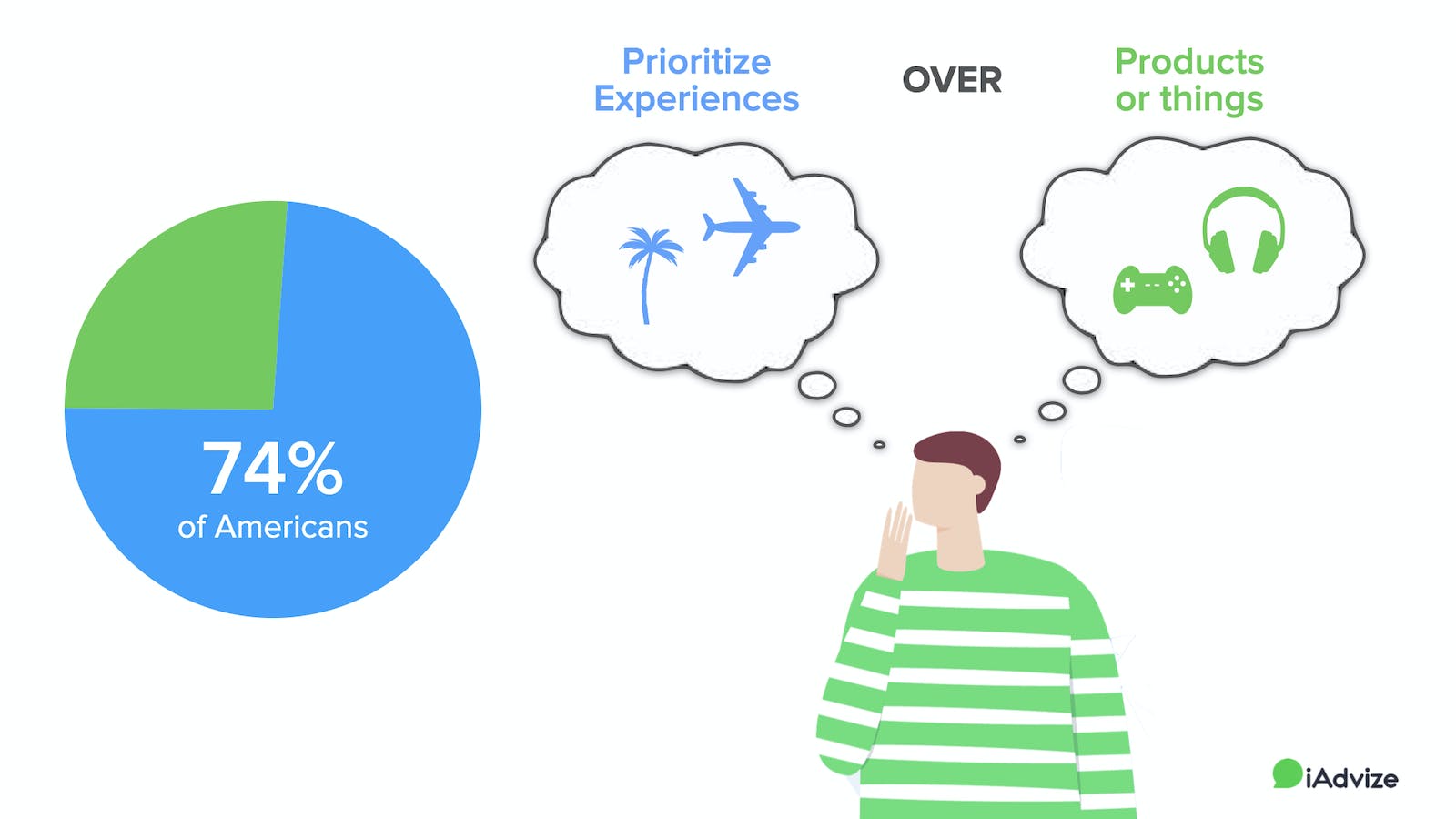
But we all need some things in our lives. That truth has given rise to a new breed of shoppers who hold brands to a higher standard. Those shoppers don't like feeling detached and anonymous. Instead, they value having connections to brands--and they like knowing more about the products they buy. They care about making thoughtful choices from brands they trust and respect.
Some brands cater to this need by highlighting their legacy and longevity. Others promote their commitment to paying suppliers and employees fairly. And others, like motorcycle brand Harley Davidson, emphasize the family feel of their customer community.
How can you support this trend? Find ways to make customers feel connected to something bigger when they shop with you. Yes, you can do this through branding. But you can also build connections with online conversation. Customers will appreciate the choice to chat with brand experts and get personalized shopping advice. When this happens, customers will build trust and know that you take their needs to heart.
Emotional
By nature, humans are emotional creatures. We may like to pretend that we're analytical when we're shopping--especially for high-ticket items. But research published in Retail Touchpoints has shown that for two-thirds of us, shopping online is all about emotion.
What emotions does shopping fulfill? Some of us like to keep up with the latest news and trends on favorite products so that others will perceive us as experts. At times, shopping is an easy boredom cure. And some of us feel a surge of dopamine and a sense of thrill from shopping. These are just a few reasons why we love to shop.
Brands that cater to our emotions can win us over. As a Customer Thermometer showed, 65% of customers said they felt an emotional bond with a brand. And the good news: 91% of those bonds are positive.
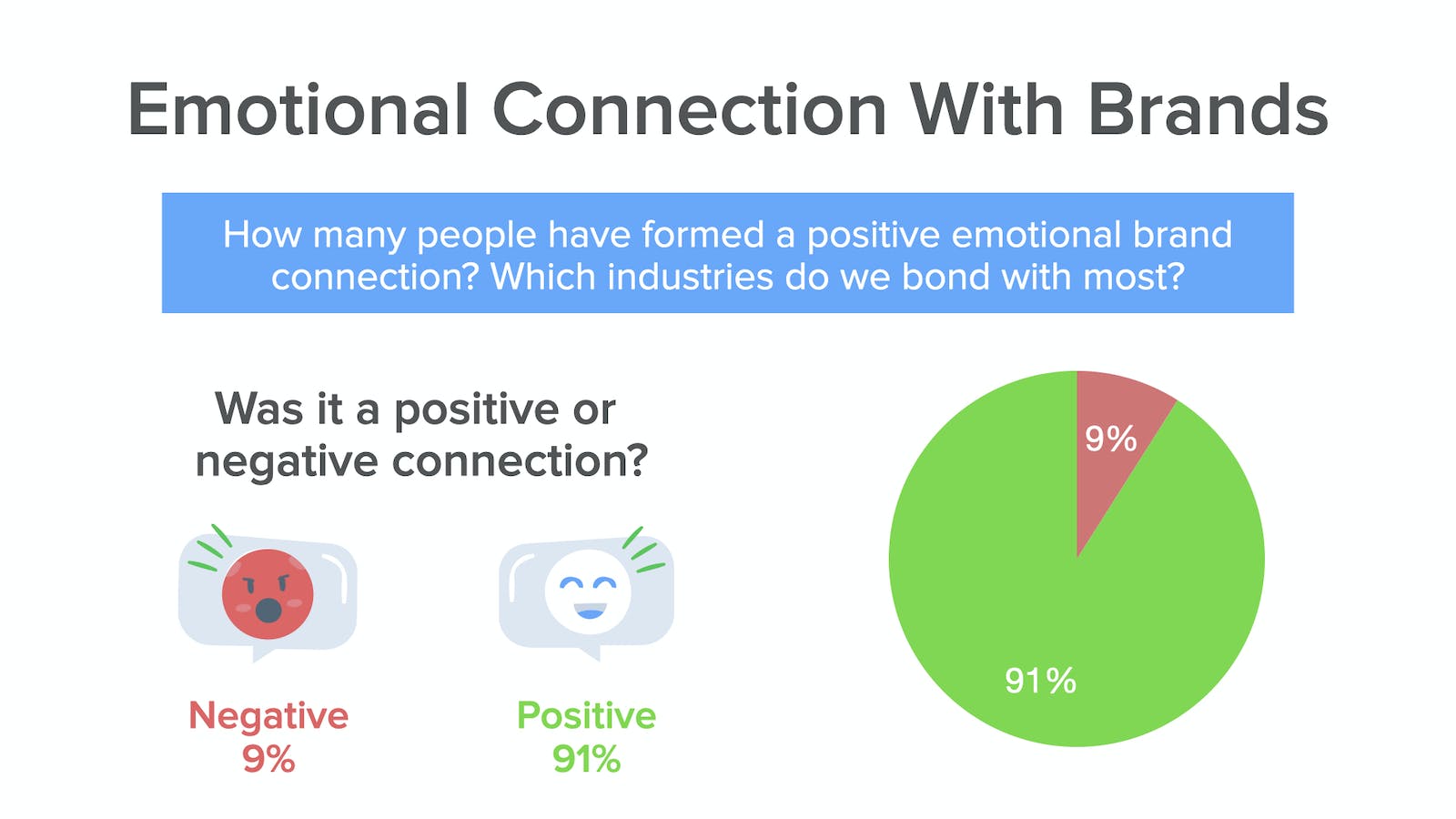
But how does it feel to shop online? Our emotions can be all over the place--from the exhilaration to frustration. It's not a shock that cart abandonment rates are high--ranging from 55% to 80% according to various studies.
You can help customers build emotional affinity with your brand by offering options for conversation. With behavioral analysis technology, you can pinpoint customers nearing the point of purchase and invite them to connect with a brand ambassador.
Human
With the rise of digital shopping, retailers gained an effective new way to reach customers. Today's customers expect every brand to have a website and appreciate the convenience of online shopping.
But there is a problem. Many eCommerce interfaces are sleek and efficient, but they're also cold and impersonal. Customers can quickly feel lost in a maze of product options. That's another reason for the high cart abandonment rates that are so pervasive in retail.
Yes, retailers must cater to shoppers' desires for simplicity and consistency online. But more qualities drive engagement. According to the SAP Center for Business Insight, companies must move from the "robotic, unfeeling interface of technology to an experience where the customer can sense the people and brands behind it all."
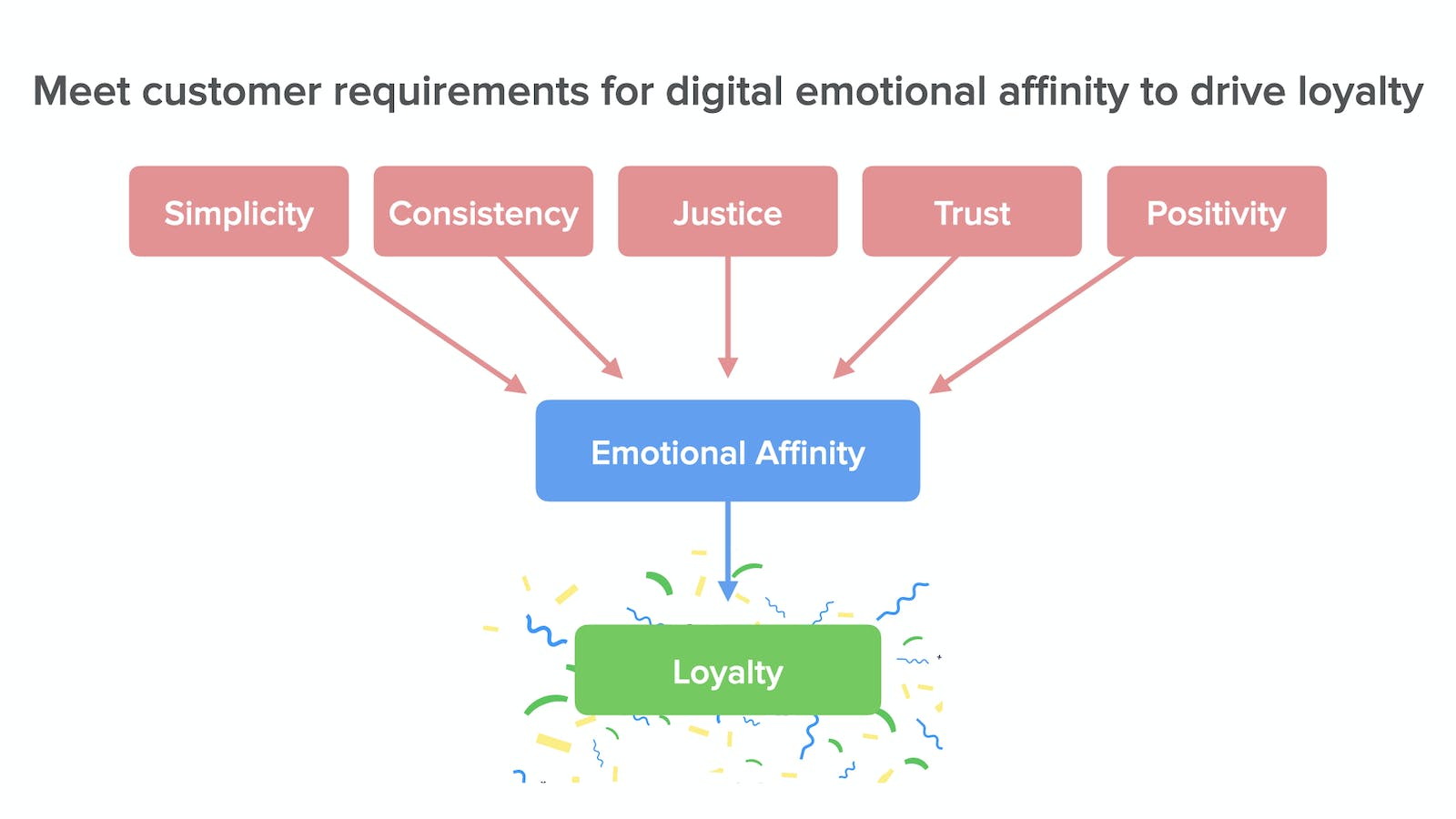
For many brands, the human touch is absent online. In fact, recent PwC research found that 60% of people say that companies have lost sight of the human side of the customer experience. And 75% of people say they want more human connections with businesses--not less.
It's time for retailers to reverse this trend. Clearly, a conversational approach can let you provide the human touch that customers desire. You can make it easy for shoppers to reach on-demand brand experts and receive attentive, personal support for every transaction.
Informative
When shopping--especially online--customers can feel overwhelmed by choices. Think about what you encounter when shopping with online giants like Amazon. A simple search for a tablet turns up more than 6,000 possibilities.
Yes, you can filter by star rating, price, and other parameters. But you can still need to sift through hundreds of choices on one site. What if you want to compare options across several sites to get the best deal? The process of shopping for a single item can feel overwhelming.
This is an enormous problem for online retailers. In fact, over 50% of shoppers say they've stopped doing business with a website because choosing products was too hard, according to research. Plus, 42% say they've abandoned a transaction due to too much choice.
One famous academic study--the "jam experiment"--illustrated the issue. Shoppers asked to pick a jam flavor from several options. For one group, six jam flavors were available. Another group had 24 choices. The group with six flavors were ten times more likely to make a selection compared to the group with more options.
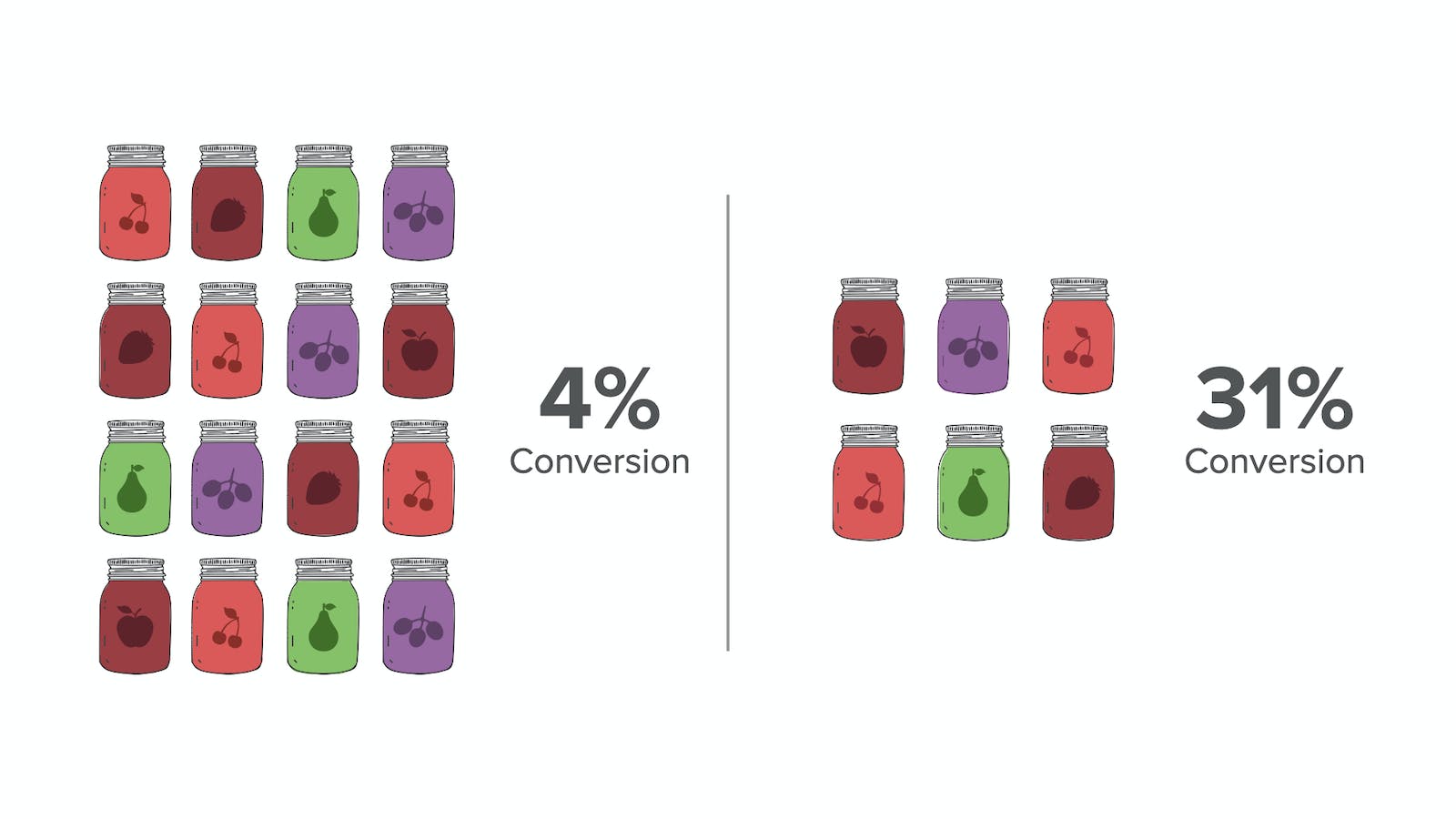
The message? For consumers, less can be more.
Does this mean you need to scale back your product portfolio? Not necessarily. Instead, you need to devise ways to help customers overcome choice overload.
Don't leave customers to wander through a myriad of product options alone. Even two dozen can paralyze them, according to the jam experiment. Give customers the information needed to make confident buying decisions.
But don't just load up each product page with specs. That can only increase shoppers' feelings of information overwhelm. You should use a conversational approach to help customers understand product options so that they can feel good about purchases.
Bringing It All Together with Conversation
Today's brands need to care about every element of the customer experience. You won't impress customers with overwhelming websites and impersonal transactions. And you don't need dozens of technologies to elevate experiences to the next level.
A conversational approach provides the 1:1 connection customers desire while answering their needs for convenience, substance, and information. You can relate to customers on a human, emotional level and grow trust. Together, these qualities will help you win in the experience economy.
We Are at the Tipping Point of the Experience Revolution
The experience economy concept isn't new. In fact, a Harvard Business Review article by B. Joseph Pine and James H. Gilmore introduced the idea in 1998. Yes, that was before the start of the new millennium.
Pine and Gilmore say that the experience economy is the latest stage of economic evolution. The first stage was the agrarian economy, followed by the industrial economy. Most recently, we've participated in the service economy.
To understand these economic changes, Pine and Gilmore use a birthday cake metaphor. In the agrarian economy, mothers used commodities (butter, eggs, flour, and sugar) to bake cakes from scratch. During the industrial economy, pre-made cake mixes were commonly used for home-baked cakes. The service economy saw the rise of store-bought cakes.
What do birthday cakes look like in the experience economy? Many parents outsource the entire party to a business that stages events for kids. Often, the cake is a part of the event package.
Outsourced birthday parties have been popular since the 1990s--and experiences like these have heightened customer expectations. According to PwC's research, 73% of US consumers say a positive experience influences them to buy from a brand.
And other research has affirmed that bad experiences drive customers away. Sixty-four percent of people--and 70% of millennial consumers--say they stopped doing business with a brand after a poor experience. Younger millennial and GenZ shoppers say their expectations are higher than ever.
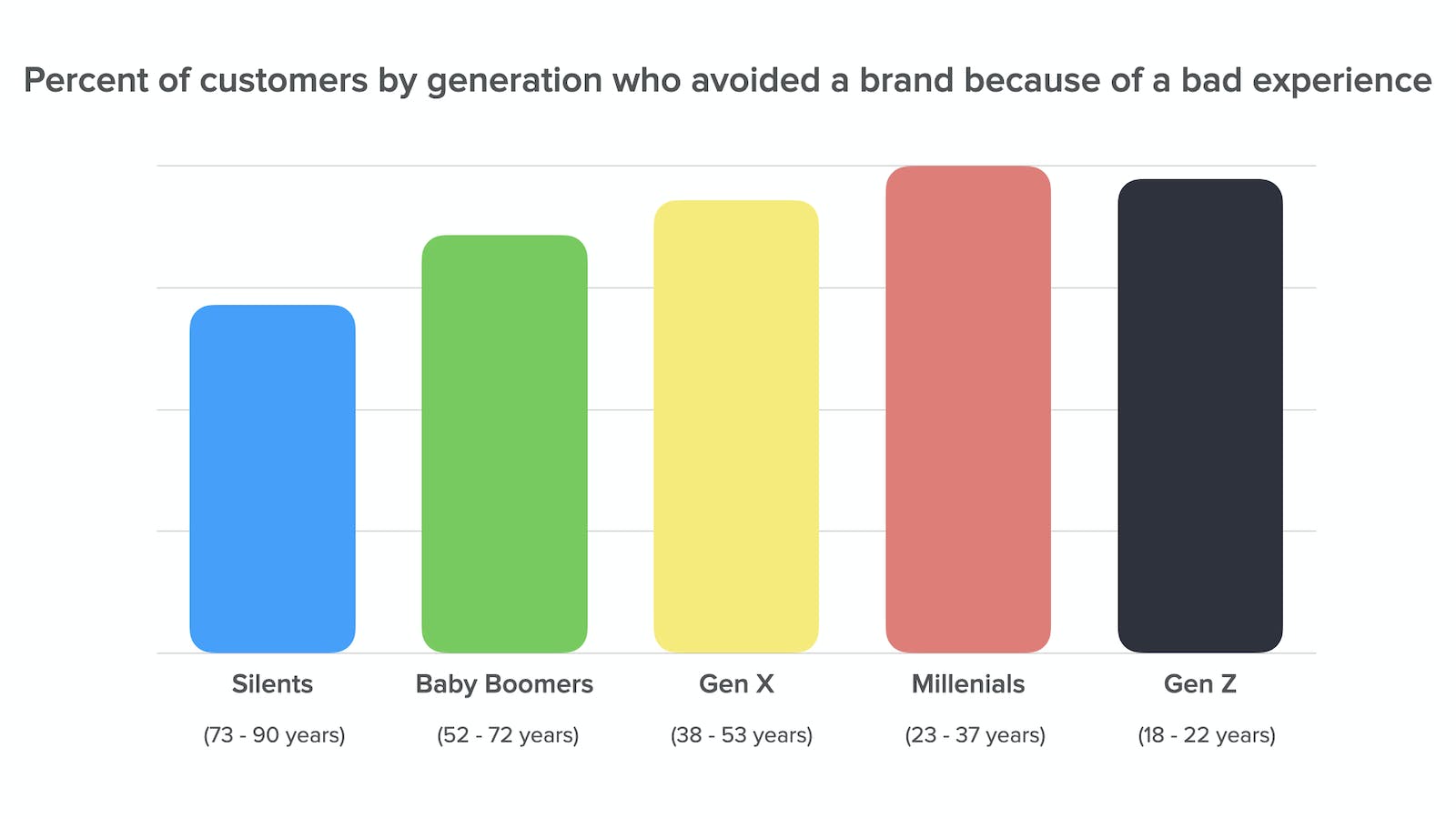
What's the message? Brands can no longer focus on products and price alone. The winners will be the ones that offer rich, human-centric experiences. As younger generations gain purchasing power, they'll demand excellent experiences--or walk away.
It's clear that we're on the precipice of sweeping change in the retail industry. You may be familiar with the idea of the "tipping point" popularized by a Malcolm Gladwell book of the same name. According to Gladwell, a tipping point is "the moment of critical mass, the threshold, the boiling point." It's the moment when the status quo shifts, and a new idea or social behavior gains prominence.
Most revolutionary ideas follow a predictable adoption curve. A few forerunners and early adopters embrace an idea quickly. At a critical point, something changes, and the idea becomes mainstream. Finally, skeptics and laggards may catch up--although some with stick with their entrenched ways.
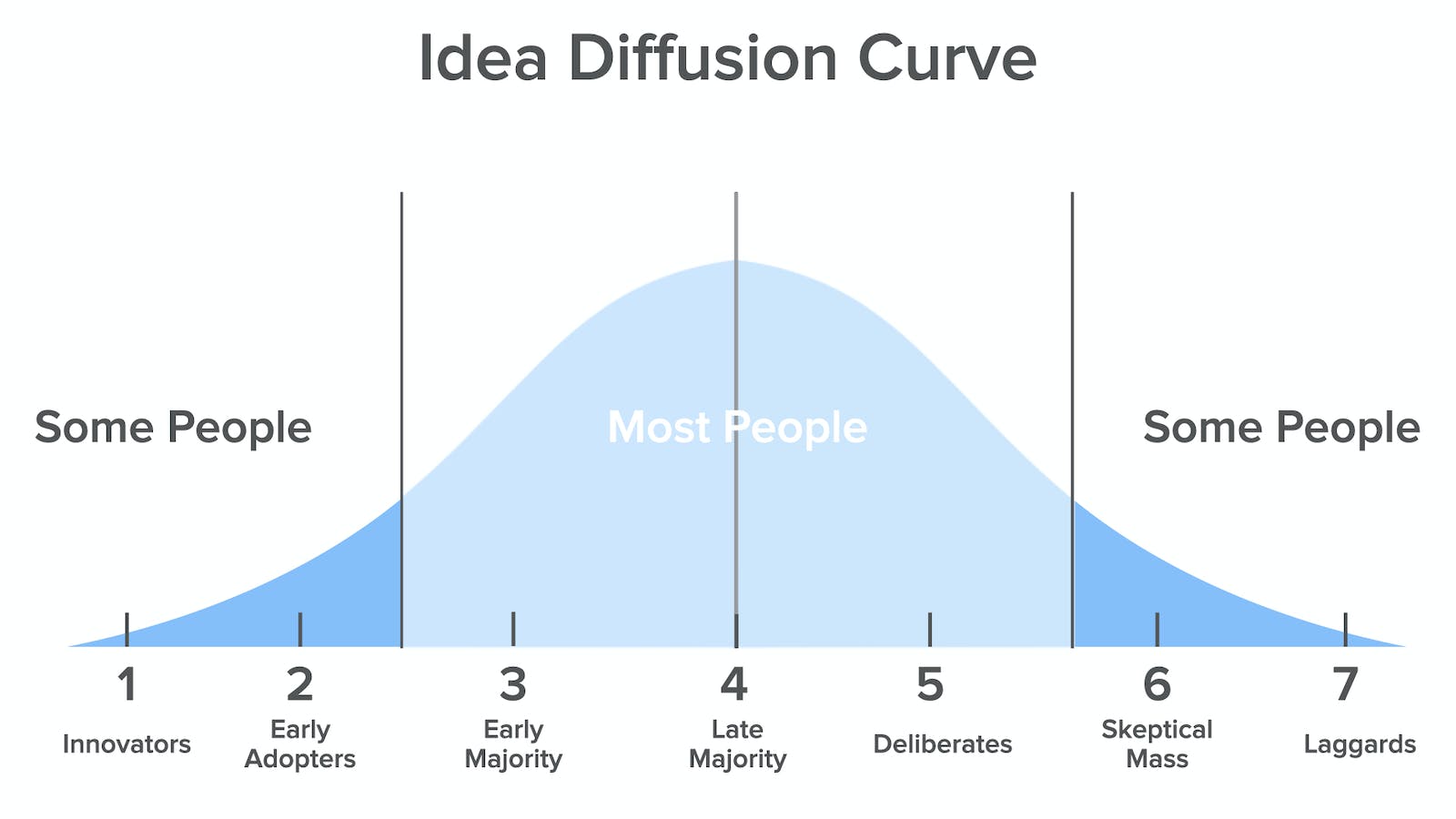
The growing influence and purchasing power of younger shoppers with new ideals about experience are pushing us steadily towards that critical tipping point.
Are you ready?
Build Connections and Humanize the Digital Experience
So, now you know that you need to rise above the non-descript experiences that we have every day if you want to wow customers. You need to create experiences that are distinct and memorable. Also, you need to know that people crave connectedness and a human touch when they shop online.
Ironically, the global Internet that has brought the world together can also make us feel detached from others. You can have superficial relationships with hundreds of people on social media--but never have an authentic discussion about meaningful topics with any of them. And excessive screen time can interfere with our ability to read social cues. It's no wonder that we can find people everywhere staring down at phones instead of talking to one another.
But we love our digital devices. They aren't going away. The next chapter in the human experience--and the digital retail experience--needs to be all about building bridges that bring humans together.
All of the old marketing tricks and tactics aren't going to captivate customers. You need to cut through the noise and clutter of today's digital environment and be human. Today's conversational platforms are the launching pad for what's next in the digital experience.
It's simple, really. Retailers need to remember that customers are people. And people need to talk to people. Our need for human connection is as vital as our need for air, water, food, and shelter.
The experience wave is sweeping over all of us, whether we're ready or not. You can blaze a new trail by making the digital experience human. Your customers will thank you for it.



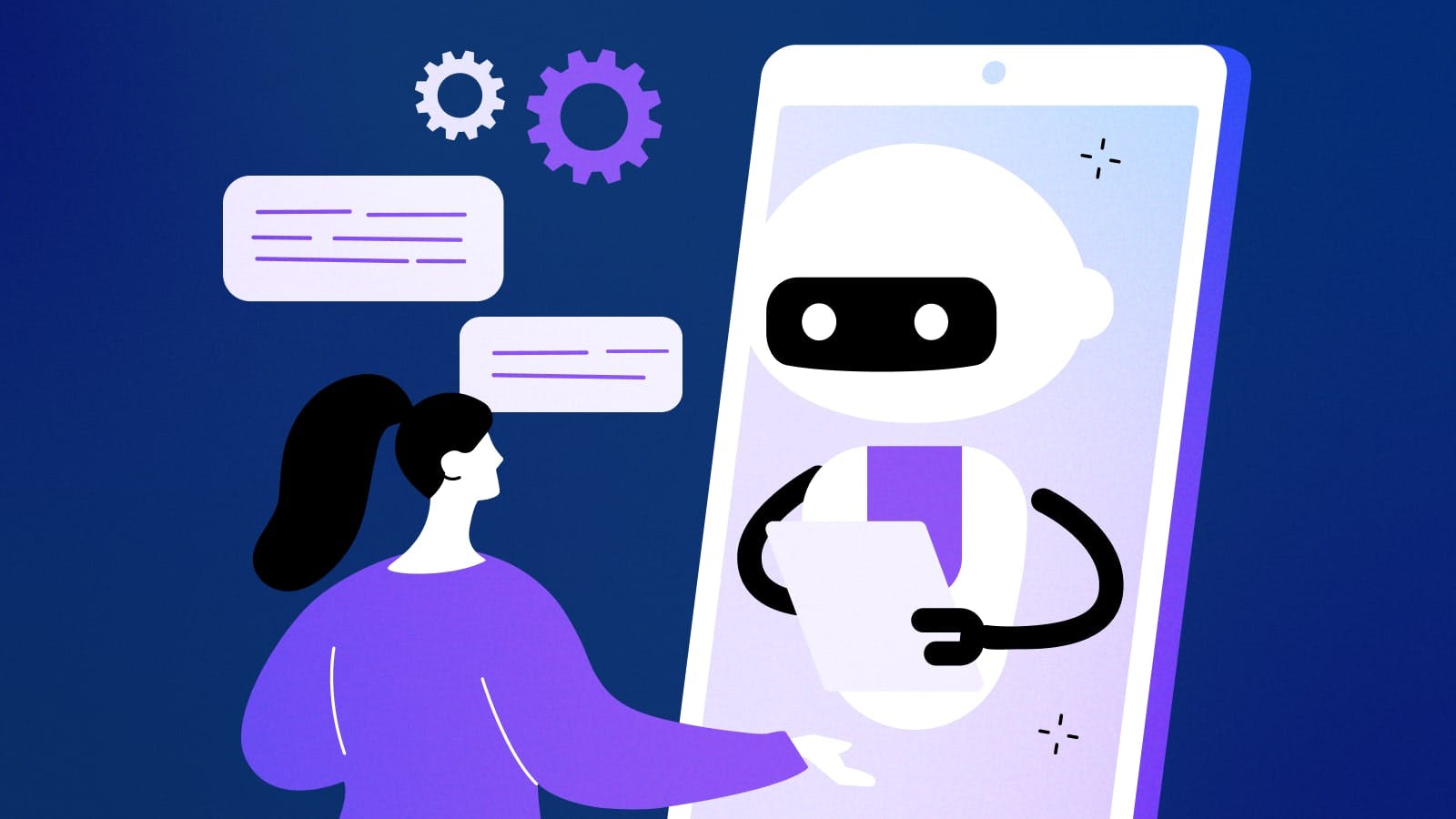
.png)



